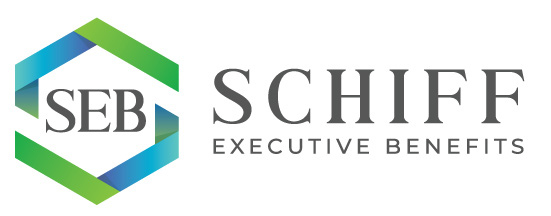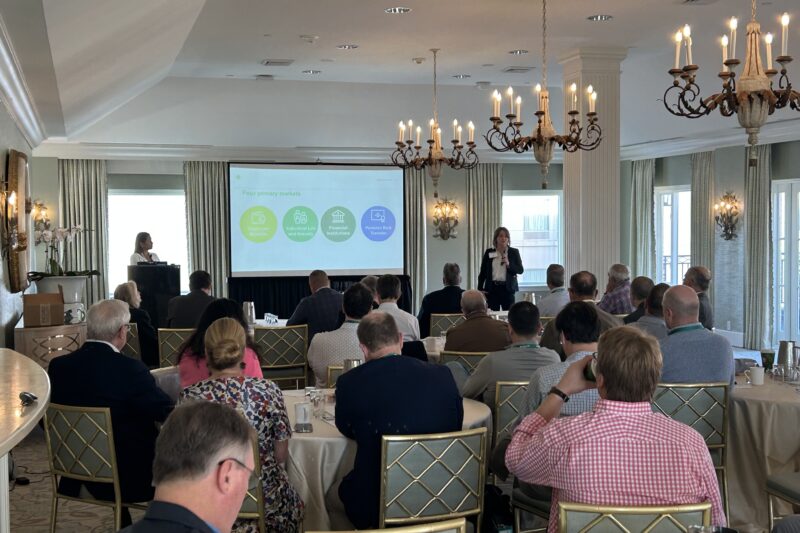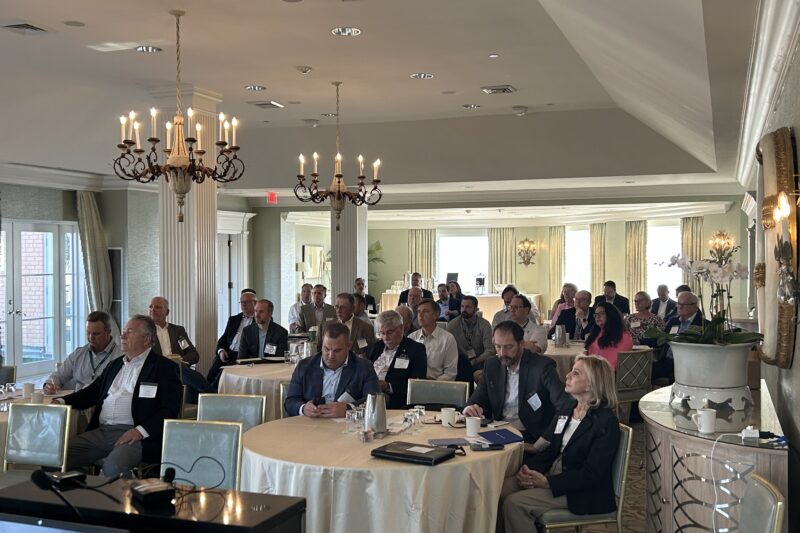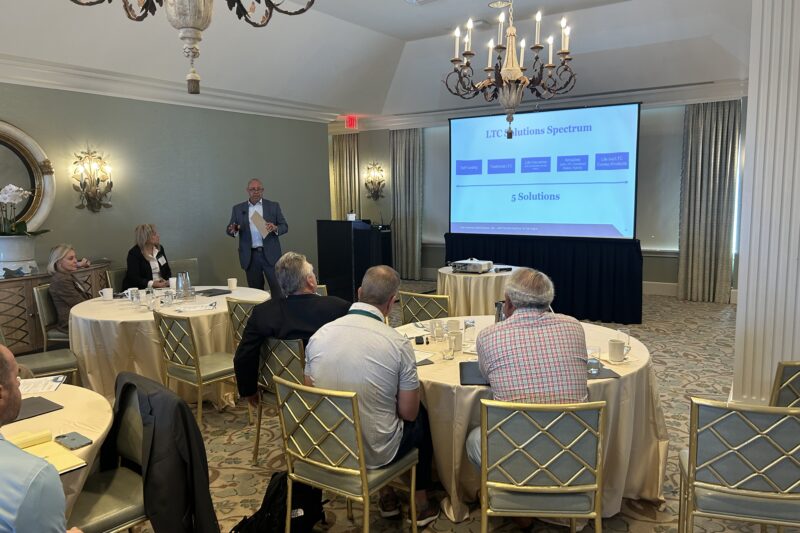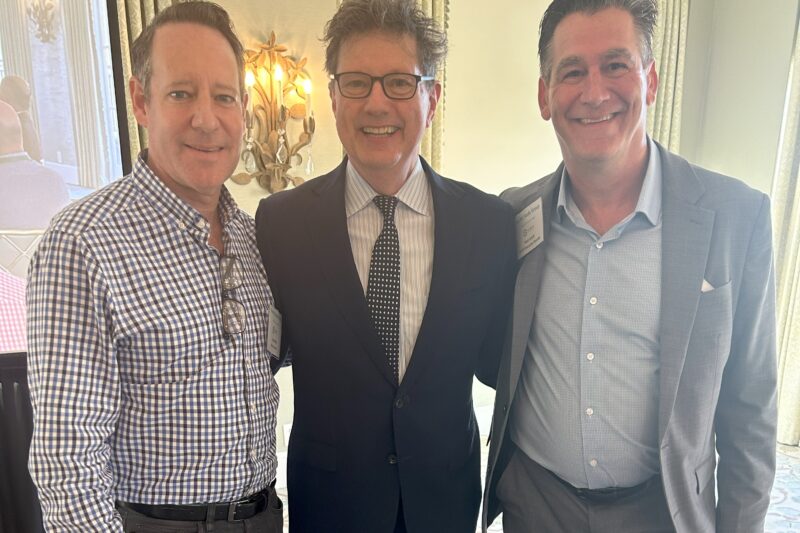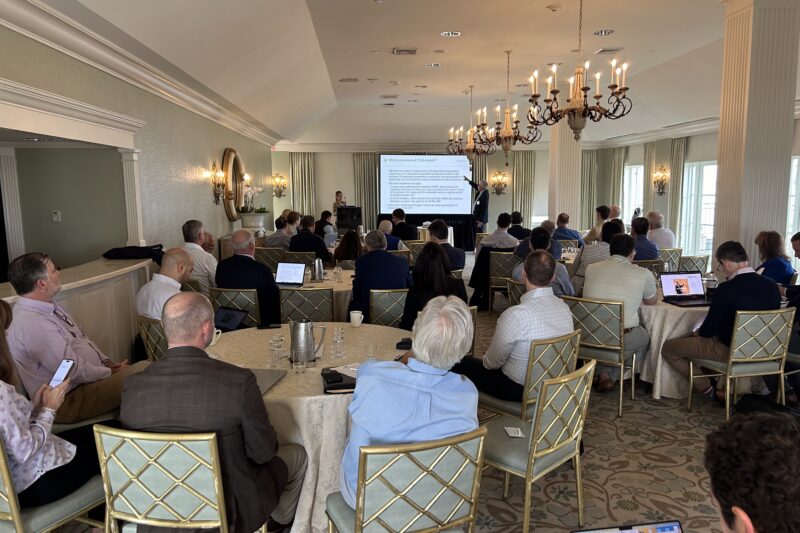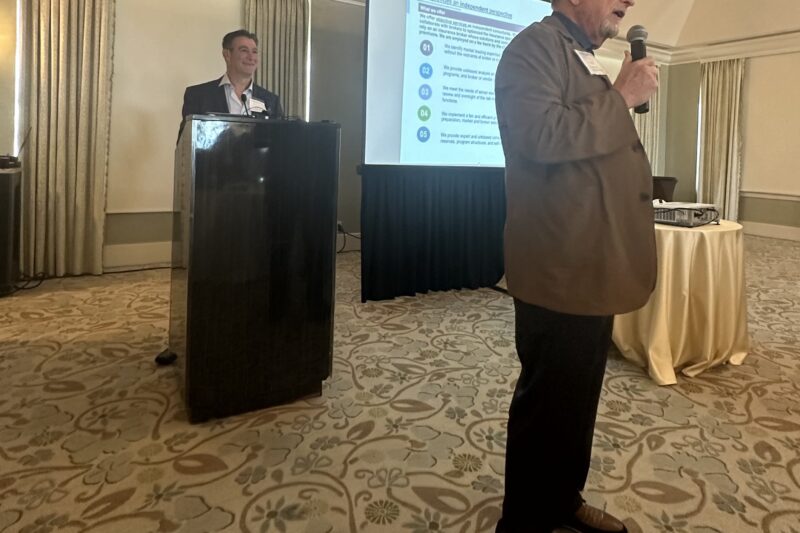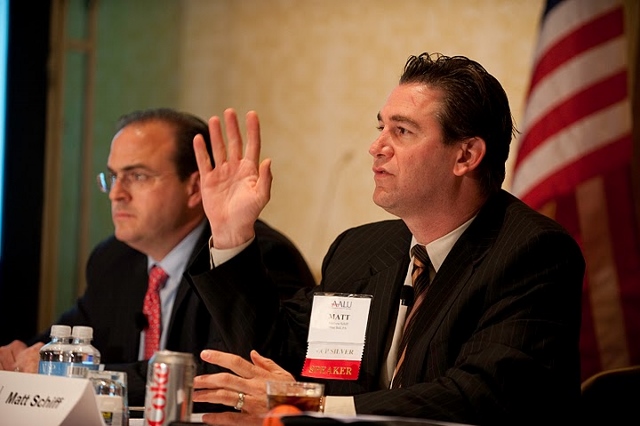As a business owner, how do you keep your best people and properly plan for yourself and your executives? Well, Bud Schiff, past President of Mutual of New York (MONY), past president of NYLEX Benefits, managing director of Alvarez and Marsal gives his insight of over 50 years in this podcast about employee retention strategies.
If you want to find a way to "retain" your best employees in a post no "non-compete" environment, listen up, and then give us a call. It's easier than you think, and it costs more to retrain a new hire, than it is to retain your best employee.
Are you an “Independent” Corporate and/or Bank Owned Life Insurance Consultant? Do you remember the Ramsey Study Group in the late 2000’s?
Well, if you want to be part of a group of “like minded” producers who wish to learn and share knowledge with some of the brightest and best in the business, then plan on being in New Orleans, November 5th to 7th, for a fast paced knowledge summit specific to the advanced planning market of corporations and banks. Meeting will be held at the Hotel Monteleone where the latest changes to products, services, and admin platforms will be discussed. Cost savings ideas on existing plans, as well the latest designs and tax law updates will be shared.
Speakers: Mel Todd (COLI Consulting Group), Peter Ricchutti (Professor Tulane Business School), Bud Schiff (Alvarez and Marsal), Dylan Major (Pangburn Group) and MANY more.
Ever wanted the "perfect" plan where the company gets a current deduction when the money is paid into the plan, the cash grows tax deferred, and then the participant get the money "tax free"? Well look no further. There is a plan like that available. You just have to be willing to discriminate.
It's called a Restricted Executive Bonus plan and combines to different benefits in one. It has to be done carefully to meet IRS guidelines, but is 100% legal. Nice thing is, it's not carrier or product specific, and has the flexibility as to what type of asset you want in the plan.
To learn more, give us a call or check out our Executive Bonus material. We'd be happy to design a sample for you so that you keep your best people.
Everyone should have long term care insurance. For individuals over 45, this is the one benefit that you have a 70% chance of using during your lifetime. And the most important benefit is the Coordinated Care Provider that comes with it.
Have you had trouble and need to retain you key people? Did they want to feel like they had ownership but you don't want to give up a minority interest in your company? Well, you can design a benefit for your "key" employees, that makes your best people feel like they are an owner so that they never want to leave, and you never give up control until the day that you decide to.
For more, check out our Phantom Stock articles
Watch this video and learn about the NQDC (409A) - Deferred Compensation Plans and how you can implement one easily
Great overview by Eric Altholz about 4960 and the excise tax for not for profit companies.
Newly elected officers are financial services industry leaders who will continue to strengthen The College's nationwide alumni network You just read:
The American College of Financial Services Announces New Leadership for Alumni Board of Advisors
BRYN MAWR, Pa., Dec. 3, 2018 /PRNewswire/ -- The American College of Financial Services today announced a set of newly elected officers to its Alumni Board of Advisors, who will take their positions on January 1, 2019. The Alumni Association preserves and promotes The American College's traditions, purposes and growth by strengthening The College's relationship with alumni and friends.
The new Alumni Board of Advisors officers are:
President – Kevin Baldwin, CLU®, ChFC®, CAP®
Kevin Baldwin is the co-founder of B & L Financial Architects and has over 30 years of experience in the financial services industry. He has successfully built a career general agency for Penn Mutual, created a brokerage distribution channel for Aetna and Lincoln Financial Group, and established the National Life Academies and the Regional Rising Leaders Prospecting agent training schools. Most recently, Kevin oversaw MassMutual's Department of Field Training and Development. Kevin earned his bachelor's degree in history and political science from the University of Connecticut and has served on the Alumni Board for a decade.
Vice President – Lucas J. Quaccia, CLU®, CLF®, ChFC®
Luke Quaccia is a Managing Partner at New York Life, where he has worked since joining the organization in 2000 as an agent. After qualifying for Executive Council three times, Luke transitioned into his role as Partner in 2003, earned Senior Partner in 2008 and was promoted to Managing Partner of the Chicago North Shore General Office in 2009. In May 2015, he moved into his current role leading the Central California General Office. He earned his bachelor's degree in economics from Stanford University and has served on the Alumni Board for five years.
2nd Vice President – Lynnette Muleady, MSM, CLU®
Lynnette is the Director of the Agent Development Center at State Farm and has over 17 years of financial services industry experience. Lynnette was appointed to her current role in March 2018, where she oversees a team that provides training and leadership development for future independent contract agents and interns. She earned her bachelor's degree in international studies from Michigan State University and her master's degree in management and leadership from the American College of Financial Services. She has served on the Alumni Board for three years.
Secretary – Matthew E. Schiff, CLU®, ChFC®
Matthew Schiff is the President of Schiff Benefits Group, LLC, where he specializes in the design, implementation, financing and ongoing administrative support of supplemental executive benefits programs. Matthew has nearly 30 years of experience in the financial services industry, and previously served as a Managing Director with NYLEX Benefits, a subsidiary and the executive benefits consulting arm of New York Life. Matthew earned his bachelor's degree in economics from Tulane University and has served on the board for two years.
"We are excited to welcome this new leadership group for our Alumni Board of Advisors," said George Nichols III, President and Chief Executive Officer of the American College of Financial Services. "Their expertise as forward-thinking leaders in the financial services industry will enable them to continue to fortify our alumni bonds and enhance our programs for the next generation of advisors and graduates."
ABOUT THE AMERICAN COLLEGE OF FINANCIAL SERVICES
The American College of Financial Services was founded in 1927 and is the nation's largest nonprofit educational institution devoted to financial services. Holding the highest level of academic accreditation, The College has educated one in five financial advisors across the United States and offers two master's degrees in management and financial services and prestigious financial planning designations such as the Retirement Income Certified Professional® (RICP®), Chartered Life Underwriter® (CLU®), Chartered Financial Consultant® (ChFC®) Wealth Management Certified Professional® (WMCP®) and education leading to the Certified Financial Planner™ (CFP®) certification. The College's faculty represents some of the foremost thought leaders of the financial services profession. For more information, visit TheAmericanCollege.edu.
SOURCE The American College
Related Links
http://www.theamericancollege.edu
Also from this source
The American College of Financial Services Announces New Leadership for Alumni Board of Advisors

